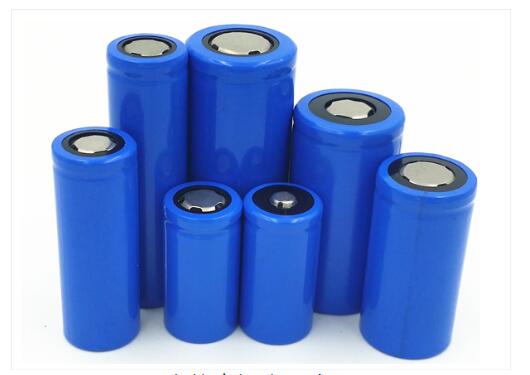Lithium Ion Battery: Optimizing Negative Electrode Mixing for Enhanced Performance
The blending and dispersion process of battery slurries significantly impact lithium-ion battery production, representing a pivotal stage in the entire manufacturing process. The negative slurry comprises graphite powder, conductive agents, suspending agents, and binders. Its preparation involves a series of processes such as mixing, dissolving, and dispersion between liquid and solid materials, alongside variations in temperature, viscosity, and environmental conditions. The quality of slurry dispersion directly influences the quality of subsequent lithium-ion battery production and the performance of final products. Various cell manufacturers invest significant time and cost into mixing ingredients, often exceeding 8 hours for negative electrode materials.

In an effort to enhance efficiency and reduce production costs in mixing, the author of this study conducted optimization experiments on the negative electrode mixing process. A comparative analysis was performed between viscosity stirring and fluid dispersion processes concerning their impact on material particle size, stability of solid content, viscosity, resistance, and battery performance.
The slurry obtained via viscosity stirring is labeled as Type I. The stirring process includes: 1) adding graphite, conductive agents, and 56% of total CMC dry powder in proportion, stirring evenly; 2) adding deionized water, stirring evenly; 3) adding the remaining CMC dry powder, continuing to stir evenly; 4) adding SBR and stirring until uniform.
1.1.2 Fluid Dispersion Process
The slurry obtained via fluid dispersion is labeled as Type II. The stirring process involves: 1) adding CMC dry powder and deionized water, stirring; 2) adding conductive agents, continuing to stir evenly; 3) adding graphite, stirring; 4) adding SBR and continuing to stir.
Using 0.016mm-thick aluminum foil (produced in Shenzhen, ≥99.8%) and 0.009mm-thick copper foil (produced in Shenzhen, ≥99.8%) as positive and negative current collectors, after electrocoating (with a width of 6mil), the materials are dried under conditions of 85°C for 8 hours, followed by rolling (thickness of 0.125±0.002mm), slitting (56mm width for positive and 581mm width for negative), producing electrode sheets. Utilizing a 16μm-thick polyethylene (PE) film (produced in Chongqing), 1.1mol/L LiPF/EC+DMC+EMC (volume ratio of 1:2:1, produced in Guangzhou, battery grade) electrolyte, and the slit electrode sheets, processes such as welding, winding, encapsulation, bottom spot welding, grooving, baking, injection, and sealing are carried out according to the company's production process to produce 32650-type 5.0Ah steel-cased batteries.
1.3.1 Viscosity
Samples of Type I and Type II slurries are stirred at 15r/min in a 10L mixing tank, and viscosity is measured using an NDJ-53 digital viscometer (produced in Beijing) every 2 hours.
1.3.2 Slurry Particle Size
Particle size distribution of the slurries after stirring is measured using a Mastersizer 3000 laser particle size analyzer (produced in the UK) and compared with the particle size distribution of graphite powder.
1.3.3 Stability of Solid Content
Solid content variation is assessed by measuring the bottom slurry content in the mixing tank every 2 hours.
1.3.4 Membrane Sheet Resistivity
Slurries are coated on insulating thin films, dried in an oven at 95°C for 4 hours, and the resistivity of the samples is measured using an LFY-406 resistivity tester (produced in Shenzhen).
1.3.5 Sheet Adhesive Strength
The negative slurry is coated and dried on copper foil, creating sheets for adhesive strength testing using an FY-108 computerized tensile tester (produced in Dongguan).
1.3.6 Charging Constant Current Ratio
Capacity tests are conducted using a CT-3008W-5V10A.204 detection cabinet (produced in Shenzhen) for 1C charge/discharge and recording the cell's charging constant current ratio.
1.3.7 Performance
Using a CT-3008W-SV30A-NF detection cabinet (produced in Shenzhen), the cell's capacity retention rate over 200 cycles is recorded for 3C charge/discharge testing.
Viscosity is a critical parameter reflecting slurry flow and stability. A suitable viscosity ensures not only stability but also optimal coating effects. The viscosity change curves for Type I and Type II slurries are depicted in Figure 1.
2.2 Slurry Particle Size
Particle size distribution is pivotal in determining slurry dispersion. Closer alignment of slurry particle distribution to powder particle distribution indicates better dispersion. The particle size distribution curves for Type I and Type II slurries are shown in Figure 2.
2.3 Stability of Solid Content
Solid content variation serves as an indicator of slurry stability. Assessing solid content at intervals demonstrates any settling tendencies. Changes in solid content within 24 hours for different slurries are displayed in Figure 3.
2.4 Membrane Sheet Resistivity
Box plots in Figure 4 compare the resistivity of membrane sheets prepared from Type I and Type II slurries.
Three tests for adhesive strength per set are conducted for different slurries, as shown in Figure 5.
During cycling, negative graphite experiences volume expansion and electrolyte solvation, which can cause graphite fragmentation and detachment. Conductive agents can connect graphite to form a robust conductive network. The capacity retention rate of cells produced from different slurries is shown in Figure 6.
Dry mixing of CMC falls under powder blending, facilitating rapid dispersion within a short duration. Simultaneously, employing viscosity stirring subjects the slurry to significant shear and frictional forces, enhancing dispersion effects. The negative slurry produced via this method exhibits superior characteristics such as viscosity, particle size, stability of solid content, and performs better than slurries derived from fluid dispersion processes. The resistivity of membrane sheets is lower, adhesive strength is higher, and the capacity retention rate of cells is higher when produced from Type I slurry. Would you like to support me so that I could create more free Prompts?

Submit your demand,
we will contact you ASAP.

Sanxin New Materials Co., Ltd. focus on producing and selling ceramic beads and parts such as grinding media, blasting beads, bearing ball, structure part, ceramic wear-resistant liners, Nanoparticles Nano Powder

